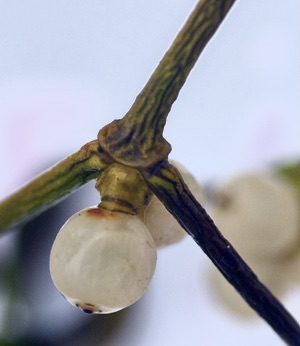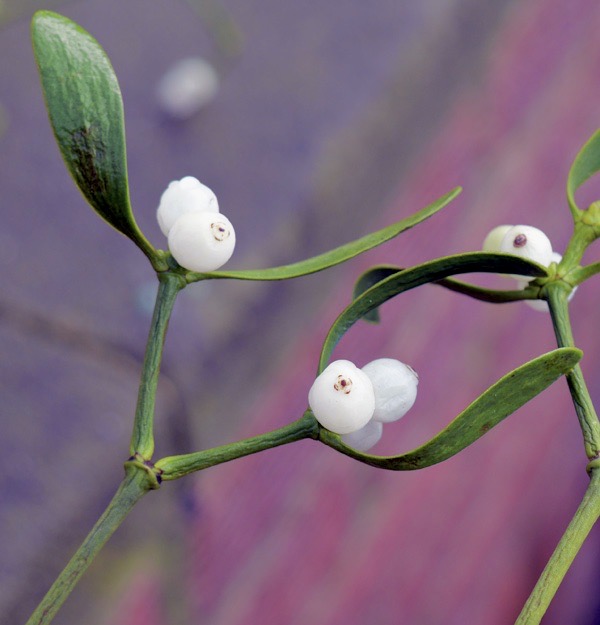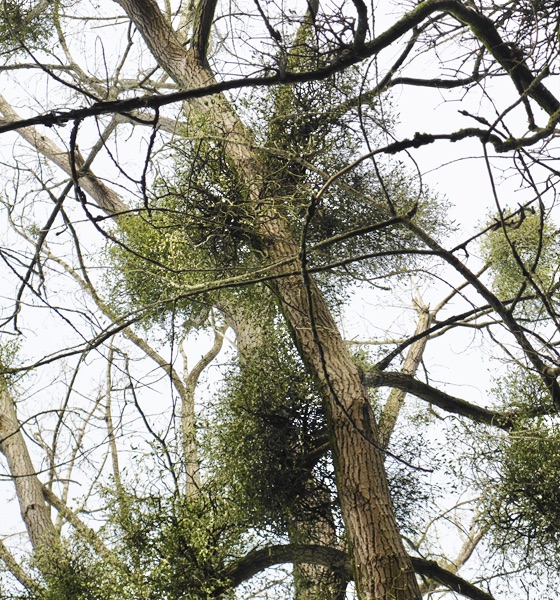Mistletoe’s superglue !

Occasionally, there is a blog about Mistletoe, it tends to be around December and Christmas. It is a plant associated with that time of year.However, mistletoe* is botanically interesting as it is a hemi-parasite. It grows on other plants - notably apple, blackthorn, lime, willow and poplar. It has evergreen, smooth-edged, oval leaves so it can photosynthesise, making sugars and other complex organic compounds. However, it relies on its host plant for water and mineral salts. It ‘hijacks’ water and minerals by forming ‘clamp-like’ connections (known as haustoria) with the xylem (water conducting tissue) of the host.
Mistletoe produces its characteristic white berries (known as drupes) during the winter months. Within the flesh of the berries are the seeds. The berries are often taken by birds and as the tissue around the seeds is sticky, the bird will often try to scrape off a seed sticking to its beak by ‘wiping’ the beak against the bark of a tree. The stickiness of this material probably helps stick the seed to a host. The sticky material is fibrous and is known as viscin (the scientific name for mistletoe is Viscum album).

slightly dehydrated Christmas mistletoe berries
Now viscin is being investigated in depth for its adhesive properties. Each berry can produce some two metres of the sticky viscin fibres, and when wet these can be processed to form thin films. It may be that it can be used as a wound sealant or skin covering. Seemingly viscin can stick to almost anything, not only natural materials from wood, skin and feathers but also plastic, glass and metal alloys.

'Balls' of mistletoe
Research into viscin has been initiated at McGill University and the Max Planck Institute of Colloids and Interfaces. It may be that it will offer a new type of adhesive that is biodegradable and biorenewable.
- Mistletoe is a member of the Santalaceae, which includes the sandalwoods,
Comments are closed for this post.
